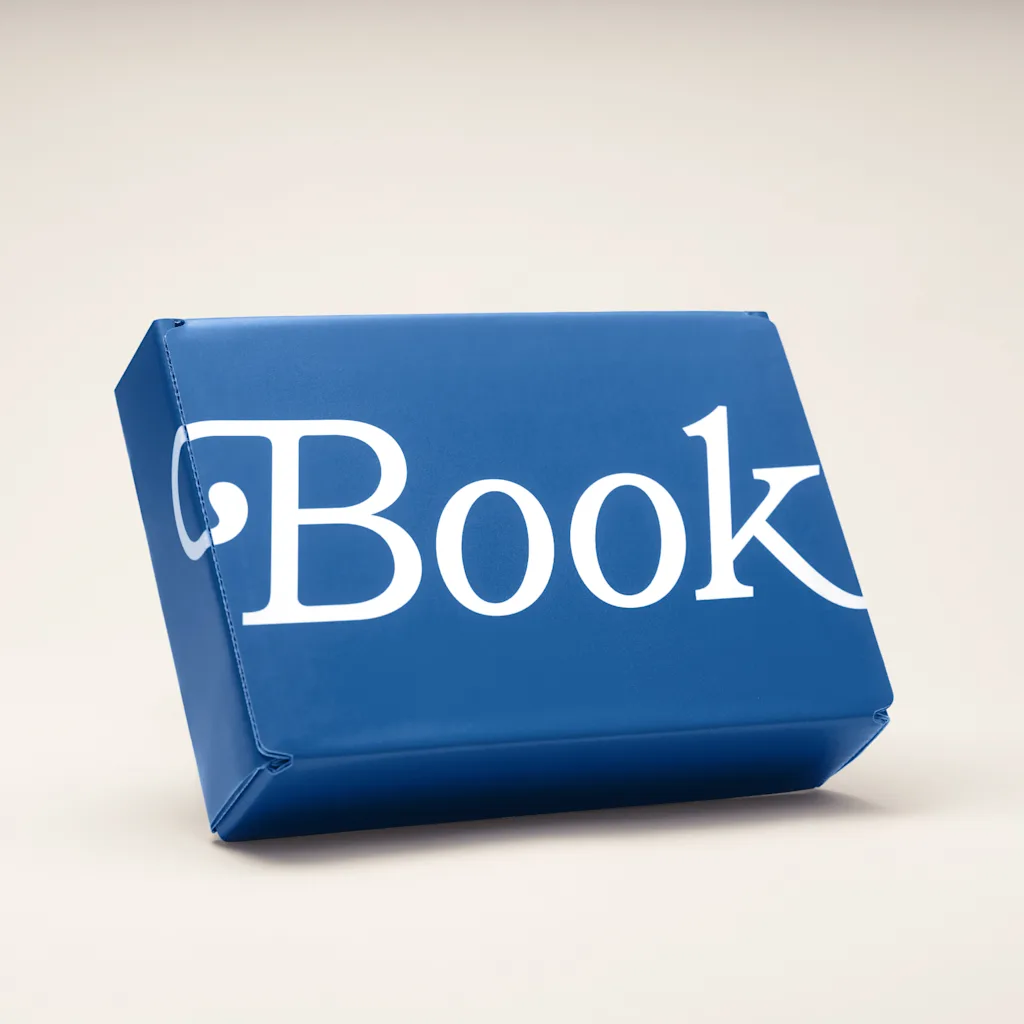How Book of the Month club survived 100 years of a turbulent publishing industry

A hundred years ago, it wasn’t easy being a reader. Books were expensive and libraries weren’t common, so it was hard to get your hands on your next read.
In 1926, a magazine editor, professor, and book publisher tried to solve the problem with a mail order company called the Book of the Month Club. The men would read upcoming books, select what they considered the best, then mass-produce them, thereby driving the price down.
For decades, thousands of readers across America relied on the catalog to discover new literature. But by the early 2010s, when Blake Orlandi—a recent Harvard Business School graduate—stumbled across the company, it had lost its luster.
Consumers had no shortage of places to buy affordable books, from Amazon to Barnes & Noble to their local indie bookstore. Book of the Month had sunk to offering books at bargain-basement prices, but even then, it was quickly shrinking. “Amazon did everything that Book of the Month was purporting to do, but better because of technology,” says Orlandi. “The company was basically hollowed out.”

Still, Orlandi couldn’t get Book of the Month out of his mind. The legacy company seemed to have so much potential, if only it could be reimagined for the current reading landscape. “Consumers today have a paradox of choice,” he says. “Book of the Month’s original mission of curating books suddenly seemed compelling again.”
Along with his business partner, John Lippman, Orlandi bought the skeletal remains of the Book of the Month Club. In 2016, in the midst of the direct-to-consumer boom, they relaunched it as a subscription business targeted at millennials—and particularly women, who make up the majority of its customers.
Every month, the club offers a selection of only five recently released hard cover books, largely fiction with the occasional memoir. Since the company acquires the right to publish each title with a “Book of the Month” logo on the cover, it can price these books cheaper than you were to get them at a book store. Members pay between $13 and $17 a book, depending on their plan, but they can skip anytime.
Growth mode
Orlandi is now the brand’s CEO. Over the past nine years, Book of the Month has grown to 400,000 members. It generates money from subscription fees and is profitable. It has lower margins than a traditional bookseller because it publishes the books itself. “We have a very different business model than a bookstore that pays the publisher for each book it sells,” Orlandi says. “We publish a small number of titles and we’re highly incentivized to make sure we sell all of them.”
Book of the Month is now a powerful player in helping to put books and authors on the map, along the lines of celebrity book clubs, like those founded by Oprah Winfrey, Reese Witherspoon, and Jenna Bush Hager. V. E. Schwab says when her novel The Invisible Life of Addie LaRue was selected by Book of the Month Club in 2020, it exposed her work to a new audience. Until that point, she had been largely seen as a fantasy author, but the club introduced her work to fans of literary fiction.

Book of the Month’s success is particularly impressive given that the percentage of Americans that read fiction is actively declining: In 2017, 42% of adults read fiction, and in 2022, that had gone down to 38%. A 2022 Gallup survey found that Americans read an average of 12.6 books a year, three fewer books than they read in the early 2000s.
But over last nine years, the company has gained deep insight into the habits and identities of millennial and Gen Z readers, what makes a successful book, and how social media is transforming the reading experience.
“There is this narrative that reading is dying because we’re glued to our phones,” says Brianna Goodman, Book of the Month’s editorial director, who runs the team that selects each month’s five books. “But that’s not what we’re finding. People seem to be turning to books precisely to escape being online.”

What Women (Readers) Want
Over the years, Book of the Month has zeroed in on the demographic of people who still continue to read for pleasure. It found that more women than men are reading on a regular basis: a quarter of men read fiction while for women, that figure is roughly half. “We didn’t have a clear sense of the target market when we bought the company,” says Orlandi. “But we quickly began to figure it out.”
Book of the Month’s most devoted members are college-educated women in their early to late twenties, who read one or more books a month. Orlandi says that this age is the sweet spot when people are no longer reading for school, but don’t yet have kids.
When the brand relaunched, it tried to make the brand enticing to this demographic of millennial women. Much of its branding was similar to millennial-oriented startups of that era, like Glossier, Away, and Warby Parker.
The website and app were clean and minimalist, with playful fonts, and saturated in a sophisticated blue color. In contrast to Amazon’s overwhelming volume of books, Book of the Month focused on curation, spotlighting the five books available that month.
In the early years, when social media marketing was still affordable, Book of the Month advertised on Facebook, Instagram, and YouTube, targeting women with ads that portrayed reading as part of a chic lifestyle—something you did with wine, in an attractive apartment.
Over time, when the brand hit a critical mass, it began to grow by word of mouth. Members get a free book for every person they get to sign up. The physical books themselves have become home decor, with members often posting photos of them on their bookshelves. “Our members seem to like the idea of books as objects,” says Goodman. “So much of our life is digital, and there’s something satisfying about seeing a physical pile of books you’ve read and loved.”
Now, Gen Z is just hitting the late twenties prime-reading age. But that doesn’t mean that older readers aren’t still valuable. Orlandi says there’s a certain kind of woman who self-identifies as a reader. It’s not just an activity, it’s how they see themselves. Often, it comes from positive childhood experiences with reading, or growing up in a family that valued books.
These are the ideal Book of the Month customers and the company spends a lot of effort trying to bring them into the fold. It targets them on social media and rewards customers who get their friends to sign up with free books. “We’re a subscription business, and ideally, we want to have members with us for decades,” says Orlandi. (Readers can pause the service for months or years at a time with no penalty.) “Readers may go through phases when they don’t have time to read, but they will eventually come back to books, and we want to be there to help them find the right one.”
It’s All About Curation
While cool branding and targeted marketing are important, Orlandi believes that the success of the business hinges on how well it can curate books. If a member has a bad experience with a book, they may quit and never come back. (The company has Reader’s Guarantee that allows a member to get a new book if they don’t like the one they picked.) If they find an unexpected book that they can’t put down, there’s a good chance they will be a lifelong customer.
For many readers, trying to pick the next book is overwhelming, given the pace of publishing. This is also hard for authors, who are struggling to break through. But Book of the Month can help cut through the noise.
Take V.E. Schwab, whose book The Invisible Life of Addie LaRue was a Book of the Month pick in the fall of 2020. “As a fantasy author . . . I’d rarely shown up on the shelves of those who preferred more grounded/realistic work,” says Schwab. “But thanks to Book of the Month, my audience not only grew, but so did some readers’ concept of the shapes and scope that fantasy could take.”
Goodman, who oversees a team of seven editorial assistants, says picking books is not an exact science. The company hires people they believe have good taste and instincts. Every month, they go through hundreds of books that publishers send their way, and they choose five to seven.
Their goal is to choose the very best book in a number of different categories, from romances, to fantasy, to literary fiction, to thrillers. “It’s hard to say exactly what makes it a right pick,” Goodman says. “It needs to feel fresh, like we haven’t read something like this before. The author needs to be doing something original with words.”
As experts have analyzed the decline in reading, they argue that screens—from social media on our phones to video-streaming services—are edging out reading in our leisure time. Goodman says that part of what her team is trying to do is to get readers hooked on books that are exciting enough to entice them away from their smartphone addiction. This is why pulpy page turners always have a place on the list.
Goodman believes that people are also getting tired of being online. They turn to Book of the Month to return to a slower, more analog pace of life, and the company’s curation team takes this responsibility seriously. “People have limited time, and they’re looking to books to get away from their troubles,” she says. “We want to make sure their time is well spent.”
What's Your Reaction?
 Like
0
Like
0
 Dislike
0
Dislike
0
 Love
0
Love
0
 Funny
0
Funny
0
 Angry
0
Angry
0
 Sad
0
Sad
0
 Wow
0
Wow
0
















































![ROREY releases a powerful song on radical acceptance with "Hurts Me To Hate You" [Video]](https://earmilk.com/wp-content/uploads/2025/08/image-26-800x529.png)












































